History of the Playboy Bunny Costume: How the Cheeky ’60s Cocktail Waitress Suit Evolved Into an Ever-popular Halloween Outfit
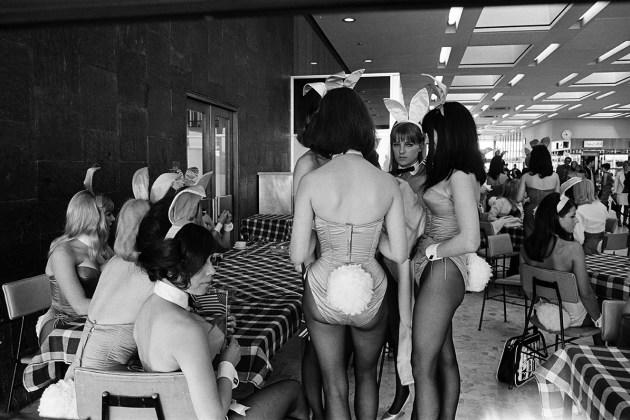
Not all work uniforms are drab: just take it from the Playboy Bunny. The satin suit made iconic by waitresses at the Playboy Club not only symbolized shifting sexual attitudes in the ’60s — today, it serves as a testament to the brand’s long-standing relevance. In 2023, the Playboy Bunny still ranks as one of the most popular Halloween costumes in the United States.
Nearly a decade after Hugh Hefner launched his nudie magazine in 1953, the editor in chief and chief creative officer of Playboy Inc. dipped his toes into the entertainment space. Modeling his first venue after the exclusive Gaslight Club in Chicago, Hefner also took inspiration from the establishment’s troupe of scantily-clad waitstaff.
More from WWD
What Happened to Playgirl? 50 Years of Scandals, Centerfolds and Revolutionizing What Women Read
Jill Biden Does Purple Power Dressing for Nickelodeon and Attn:'s 'Well Versed' Debut
Ahead, WWD recounts the history of the Playboy Bunny… from head to tail.
The Birth of the Playboy Bunny
Hefner knew that he wanted his troupe of cocktail waitresses to be in uniform — but he wasn’t initially sold on the idea of the bunny. According to Playboy’s former promotions director, Victor Lownes, Hefner originally envisioned the club’s staffers wearing short nightgowns. It was Lownes’ girlfriend at the time, actress Ilze Taurins, that suggested modeling the costumes off of Playboy’s cuddly mascot.
“[Hefner] said he’s always thought of the rabbits as male,” Lownes said in Patty Farmer’s 2015 book, “Playboy Swings.” Taurins’ idea, however, successfully convinced Hefner that the bunny could have a feminine persona.
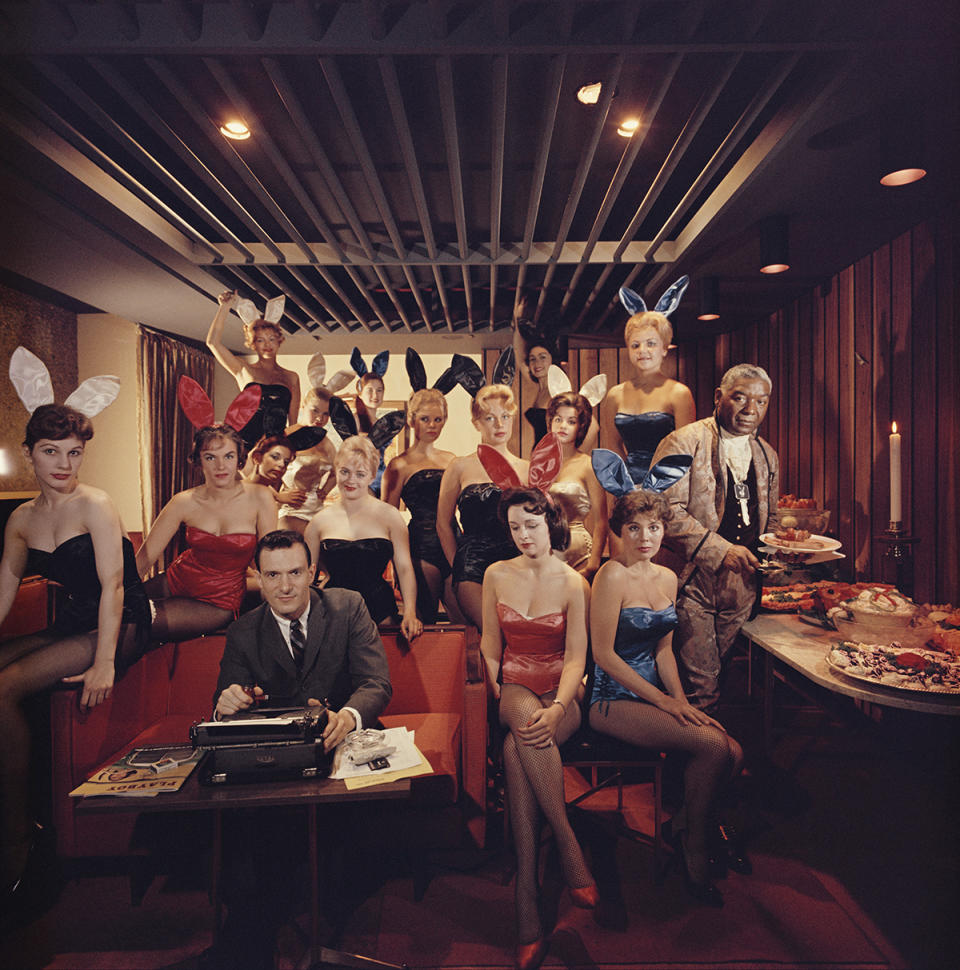
Taurins’ mother, who worked as a seamstress, stitched together the original prototype for the bunny costume using a one-piece swimsuit layered over a merry widow corset. Naturally, a fluffy yarn tail and a headband with ears completed the ensemble. Hefner slightly altered the design, adding lace-up details on the hips of the corset and a higher cut around the thigh to accentuate the wearer’s legs.
The Playboy Bunny officially debuted at the opening of the Chicago Playboy Club in 1960. The costume soon became the first commercial uniform registered by the United States Patent and Trademark Office.
In 1962, French clothier Renee Blot gave the Playboy Bunny an update, shrinking the ears and creating the outfit’s signature collar and cuffs. Blot’s final contribution was the addition of a satin rosette at the hip, which bared each Bunny’s name.
The original Bunny suit came in 12 different shades. To make sure each costume was custom-fit to the wearer’s body, Hefner tapped the talents of several designers, including Zelda Wynn Valdes, the first Black boutique owner in Manhattan, to tailor uniforms for the Playboy Club.
Earning Their Ears
A Playboy Bunny’s duties set her apart from the Playmate — one of the magazine’s centerfold models. While some Bunnies would go on to pose for Playboy, many of them only worked in the clubs. Different Bunnies had different jobs: some would dole out food and cocktails, others would peddle cigarettes. At the Playboy Club’s London branch, where gambling was legal, Bunnies even served as blackjack dealers.
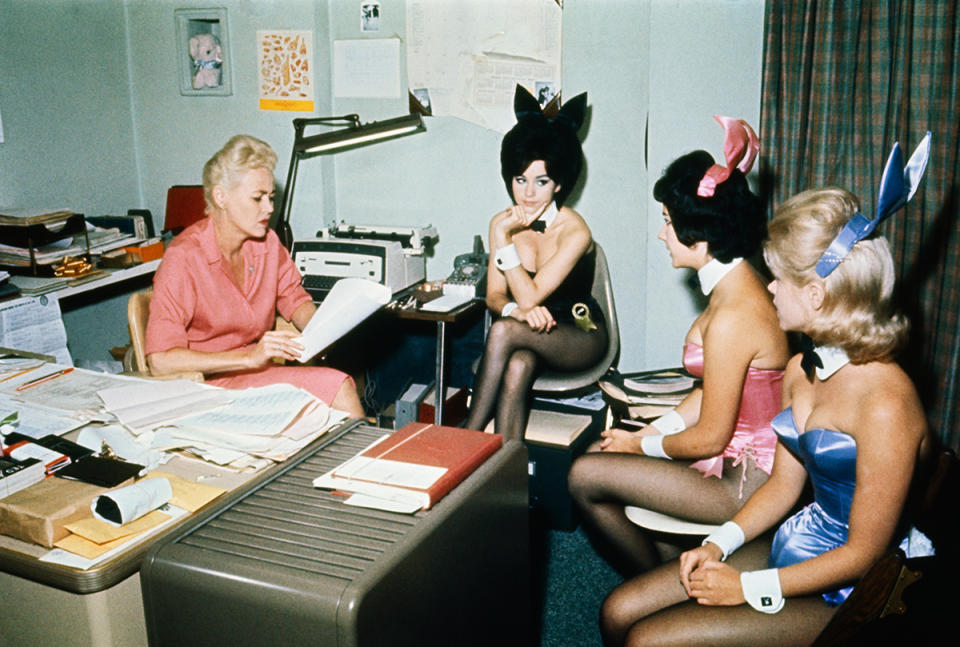
Becoming a Bunny was no easy feat. Hundreds of women would attend auditions before being selected for the club’s training program, which included learning the names of 143 liquor brands and having to memorize 20 different cocktail garnishes.
Bunnies learned various postures including the “Bunny stance,” the “Bunny perch” and the “Bunny dip.” The latter was a specific maneuver that enabled Bunnies to serve drinks without bending over.
The Bunny Mother was responsible for the welfare of Bunnies employed at each club. Before a shift, Bunnies would have their uniforms, hair and makeup inspected by the Bunny Mother. Demerits would be issued for ripped tights, crooked ears and unpolished fingernails, among other infractions. Bunnies were also prohibited from eating, drinking, chewing gum and smoking in front of customers.
Even Playboy Club patrons had to follow strict rules: making physical contact or engaging in romantic relationships with Bunnies was off-limits.
Celebrity Bunnies
Stars including Blondie’s Debbie Harry, model Lauren Hutton and activist Gloria Steinem have all been Playboy Bunnies.
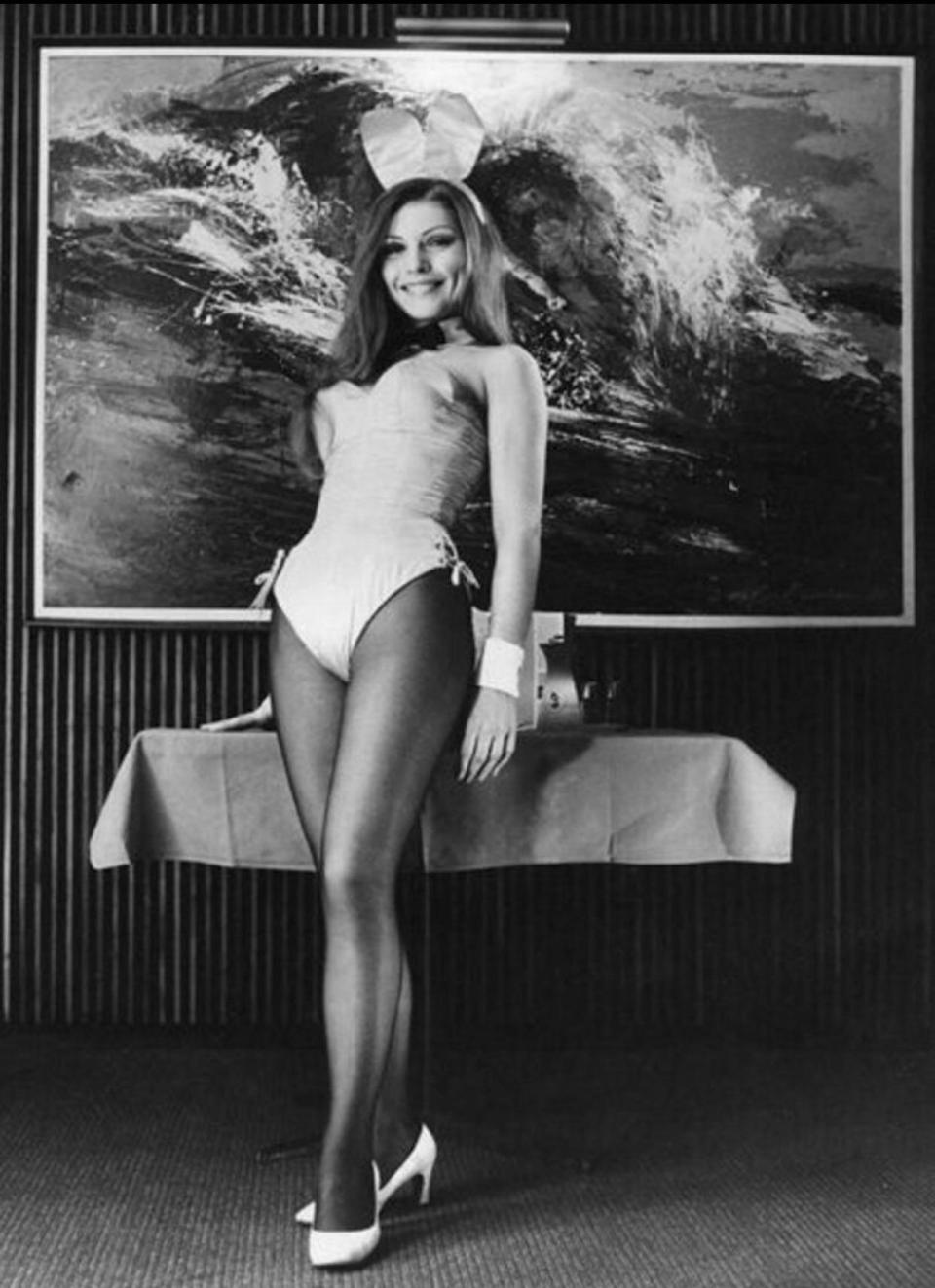
“A friend of my parents was a member of the Playboy Club, and he always made it seem so exotic and so exciting,” Harry once told BBC Radio 4. “I also thought it would be a good way to make money, which it was. So I tried it, but I think I worked there for eight or nine months.”
Steinem famously went undercover at the New York Playboy Club for her 1963 Show magazine story “A Bunny’s Tale,” which exposed the inner workings of the highly coveted waitressing gig. Steinem’s article was later turned into a television movie starring Kirstie Alley.
Reinventing the Rabbit
Many versions of the Playboy Bunny costume have existed over the years. Psychedelic patterns including paisley and polka dots were popular amidst the mod fashion craze, while velveteen holiday-themed ensembles came trimmed with white fur.
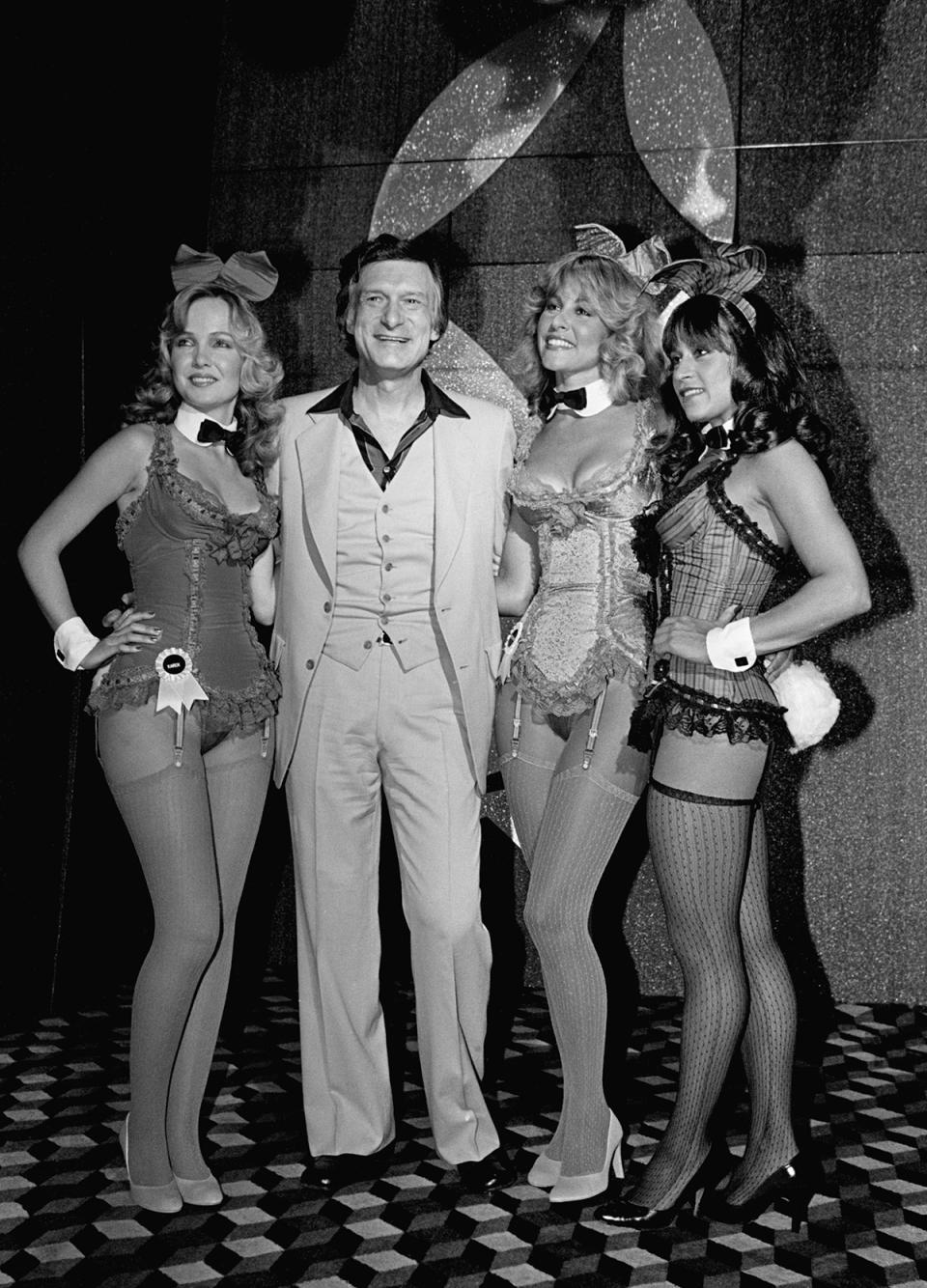
Hefner introduced the first major redesign of the Playboy Bunny uniform in 1980: the Cabaret Bunny featured a bodysuit resembling lacey lingerie. This iteration existed until the closing of the last Playboy Club in 1991.
The Playboy Club briefly made a return in 2006, when a new location opened up at The Palms in Las Vegas. Roberto Cavalli dreamed up a brand new Bunny uniform, adding an external corset and elongating the ears.
Another new Playboy Club opened in London in 2011, with Marchesa’s Georgina Chapman and Keren Craig tapped to create their own version of the Bunny suit. They added floral embroidery, lace details and beading to their design, which was auctioned off to benefit breast cancer awareness.
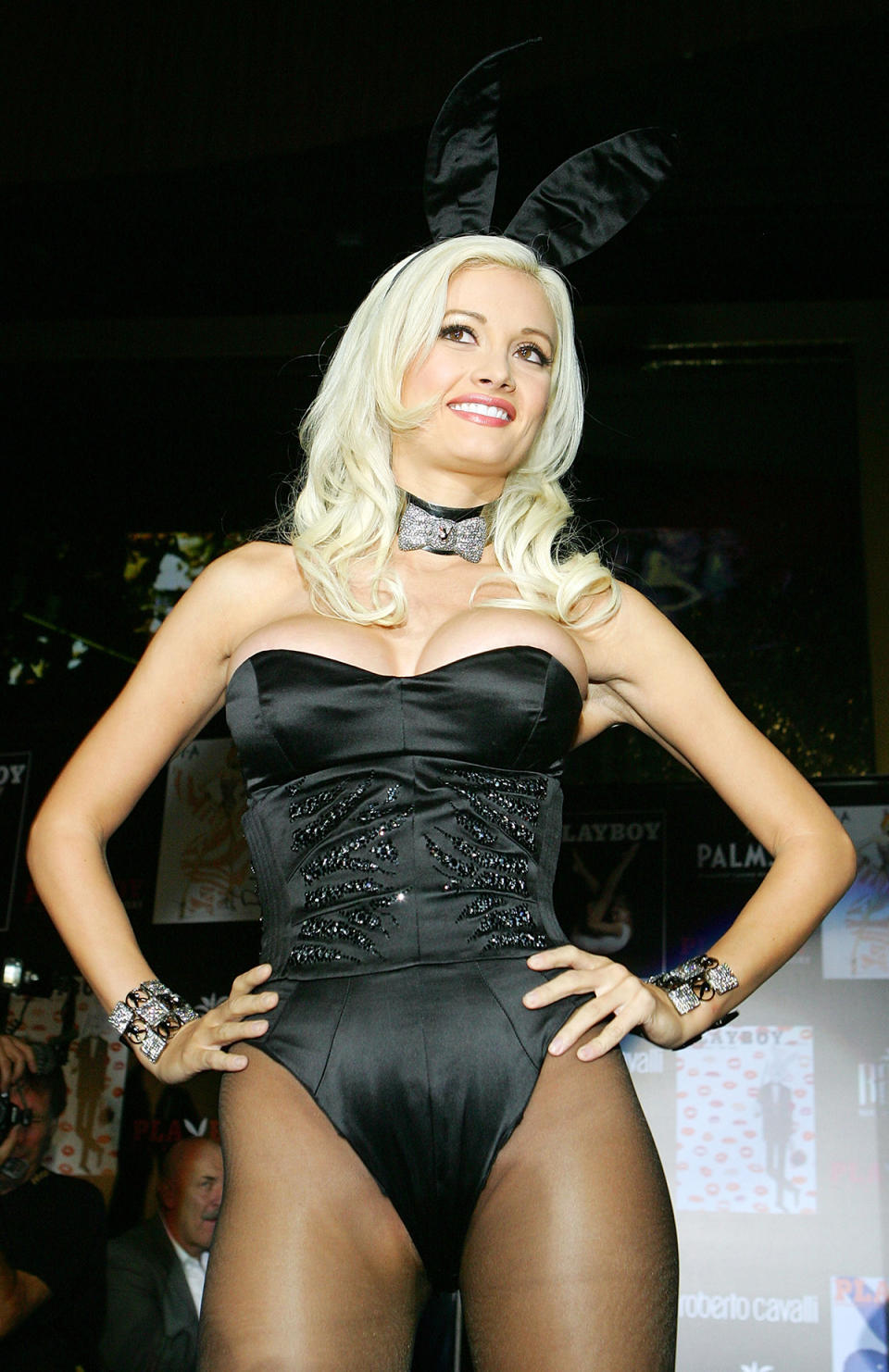
The Las Vegas and London clubs closed for good in 2012 and 2021, respectively.
Halloween Hops
Today, the Playboy Bunny lives on in the form of Halloween costumes. Celebrities such as Kylie Jenner and Paris Hilton have taken the sultry ensemble for a spin. Playboy’s very own line of Halloween costumes naturally includes several styles of their emblematic Bunny getup.
According to Google Trends, the Playboy Bunny ranks within the 100 most popular Halloween costumes of 2023, coming in just behind Wonder Woman and Morticia Addams.
Best of WWD

 Yahoo Lifestyle
Yahoo Lifestyle 
